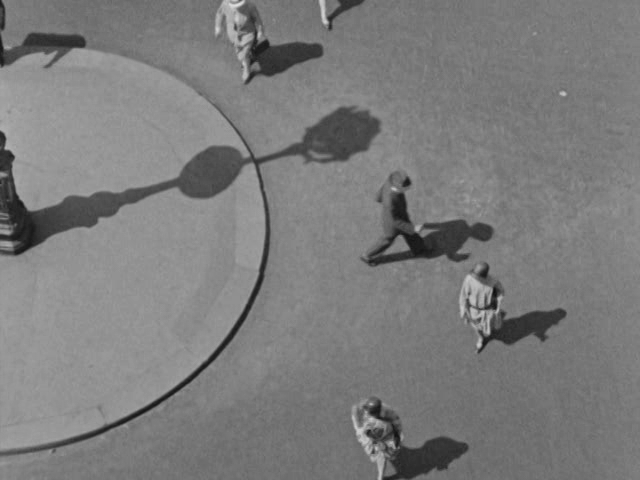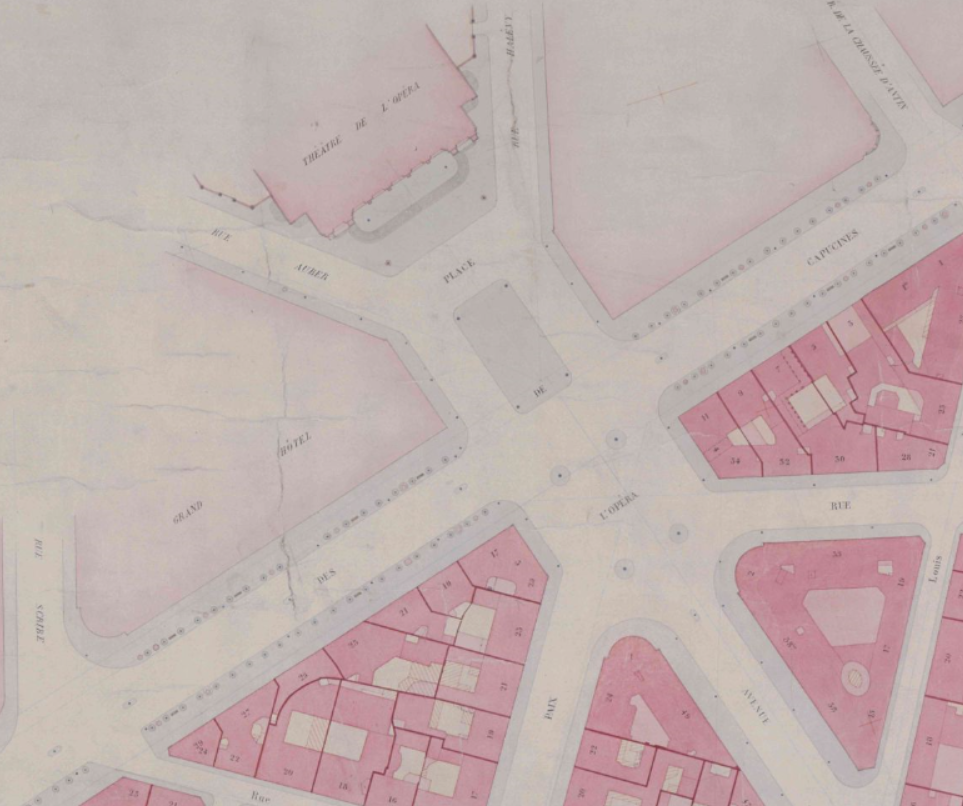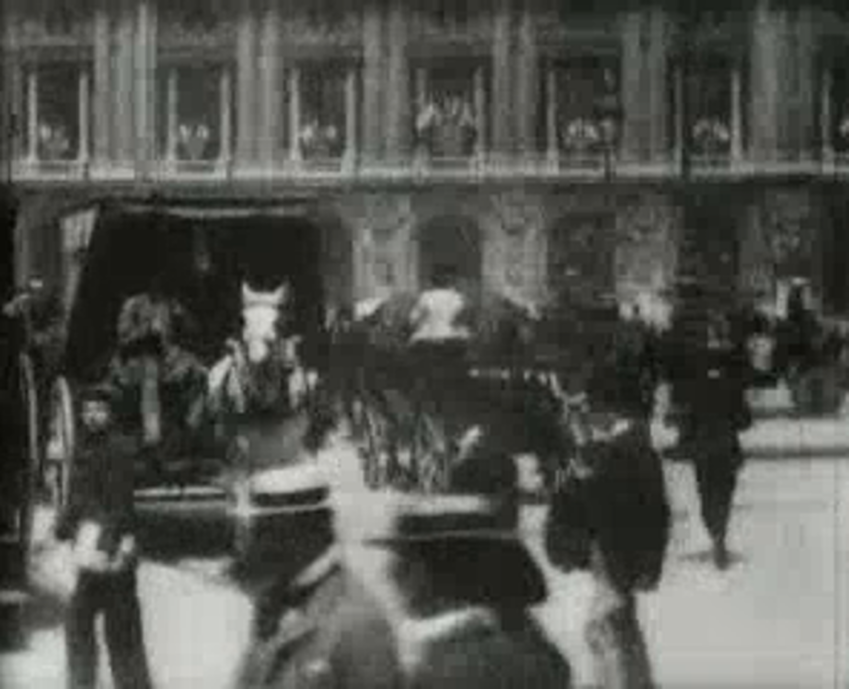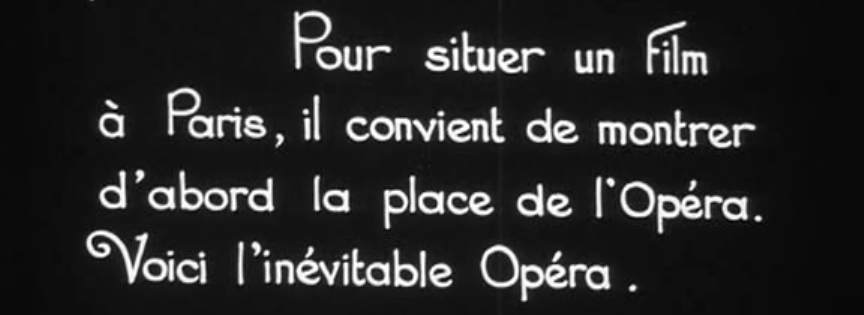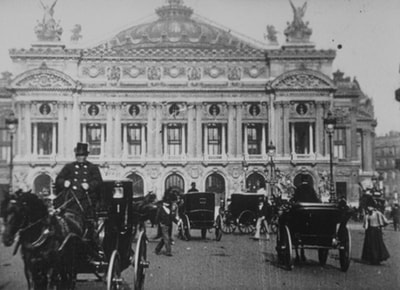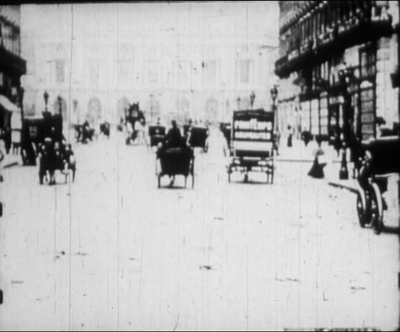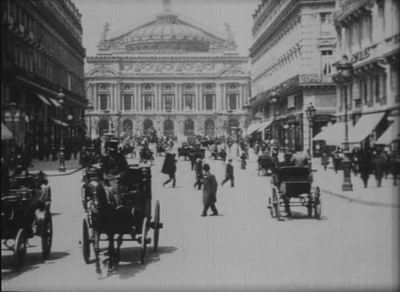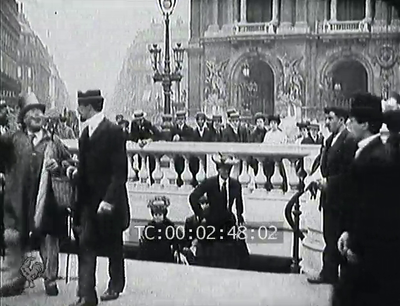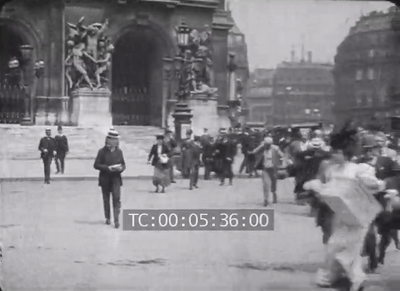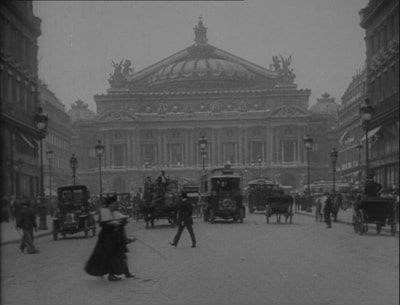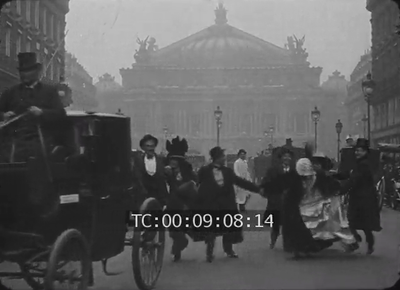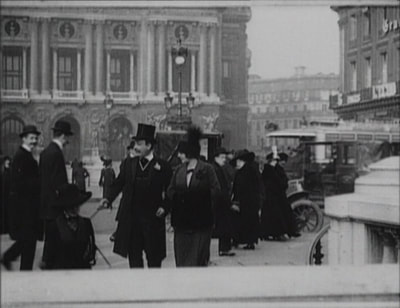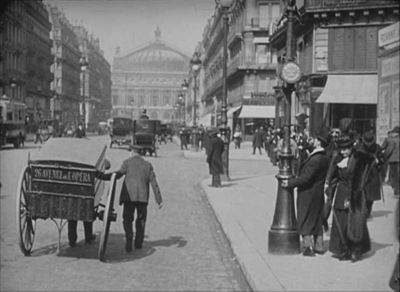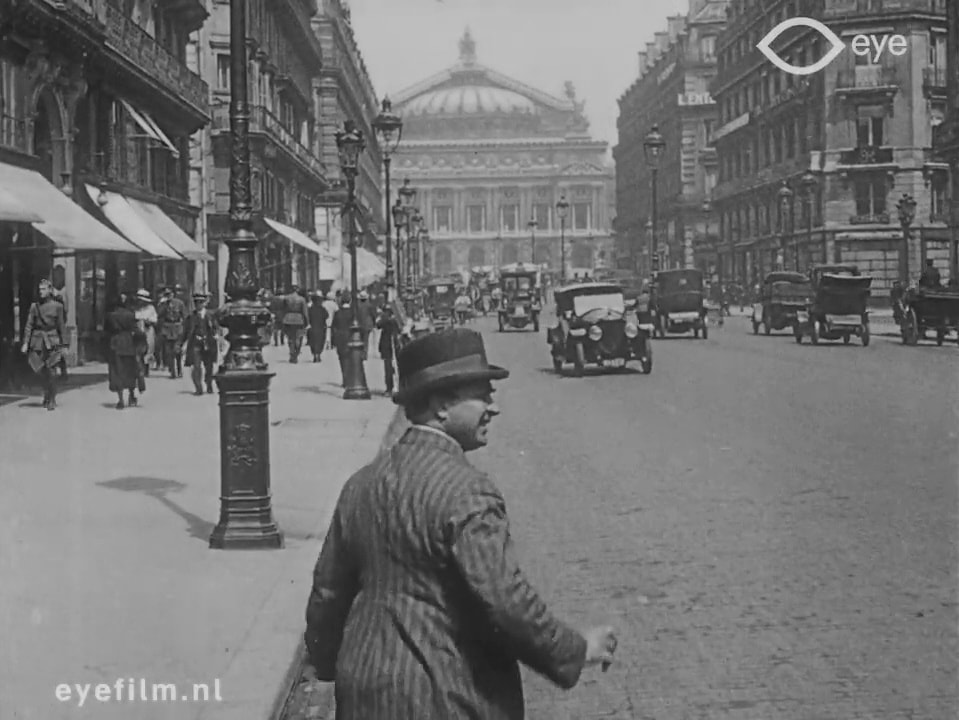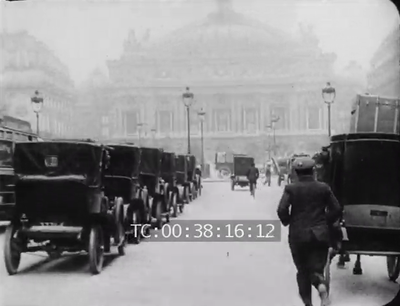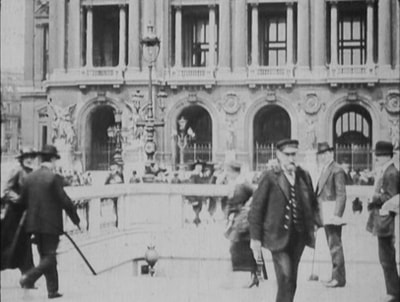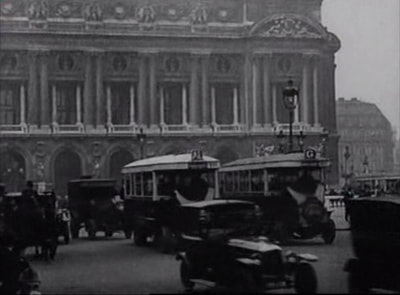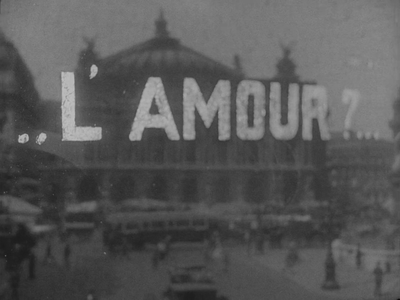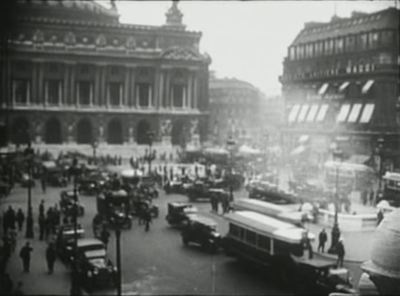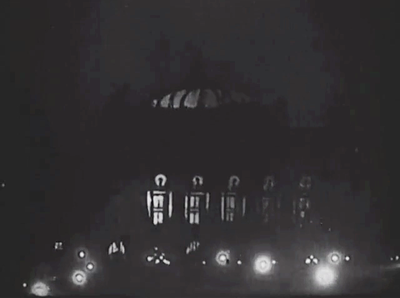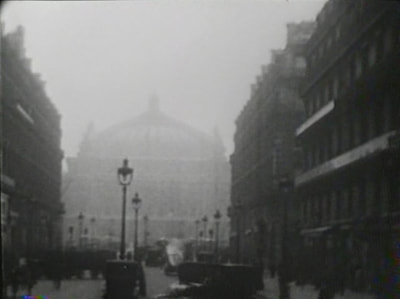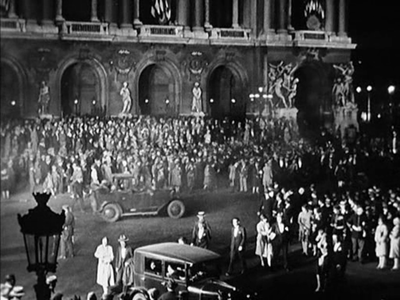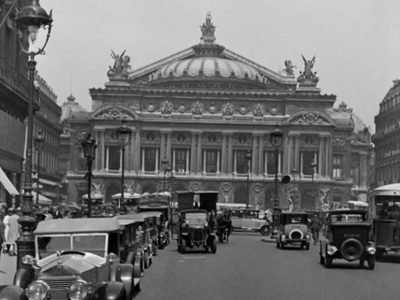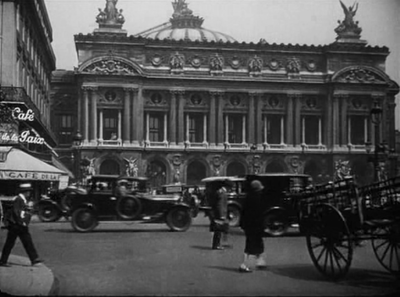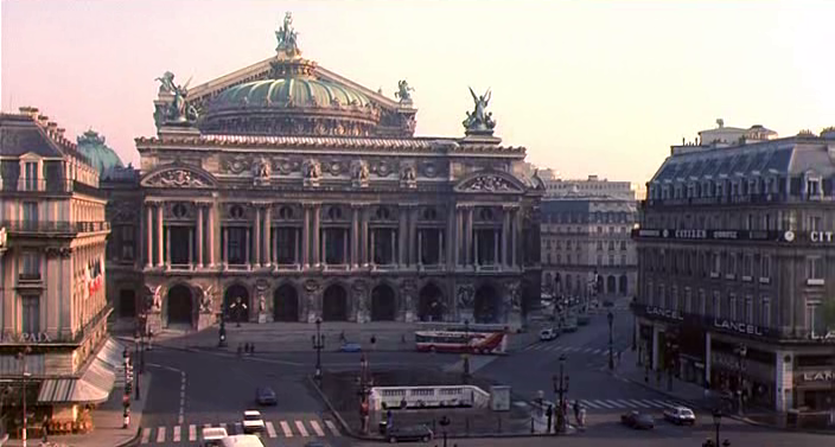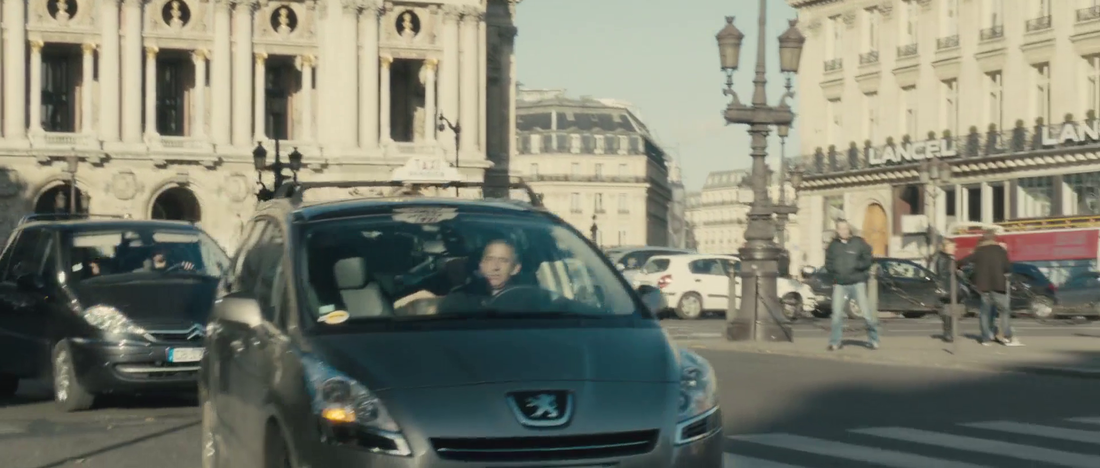la Place de l'Opéra, 1896-1929
In 1896, Georges Méliès discovered the trick of cinematic substitution while filming on the Place de l'Opéra, a short distance from his office and laboratory at the Passage de l'Opéra:
|
|
One day when I was prosaically filming on the Place de l’Opera, the camera jammed and produced an unexpected result. It took a minute to release the film and set the camera running again. During that minute the passers-by, the buses, the vehicles had all moved, of course. When I projected the film, repaired at the point where it had broken, I suddenly saw a La Madelaine to Bastille omnibus transformed into a hearse, and men transformed into women. The truc par substitution was discovered, and two days later I filmed my first metamorphoses of men into women, and my first sudden disappearances.
|
There are three Place de l'Opéra listed in his catalogue (numbers 10, 17 and 139), but since they are all now lost we can't say if they included the film where the omnibus became a hearse.
|
Méliès filmed on the place de l’Opéra, then, firstly because it was conveniently local. The location had the further appeal of heavy traffic – horse-drawn and motor vehicles, as well as pedestrians – with the Opera house itself as spectacular backdrop – remembering that, unlike postcards, filmic views of Paris monuments needed also to show animation. On top of that, the place offered safe vantage points in the midst of the traffic from which to film – not only the terrace in front of the Opera House but also the four islands on which are lampposts:
|
|
Other makers of actualités exploited these same advantages. As well as the two Lumière films shot here, the editor of a Lumière catalogue identifies four ‘concurrents’ from 1896. There are at least two Gaumont films and one Pathé film. W.K.L. Dickson shot a film for British Mutoscope in 1897, described in the company’s catalogue thus: ‘This view was made from a point opposite the Opera House, taking in the greater portion of the square, which is filled with vehicles and pedestrians, and is very characteristic of life in the French capital.’ In 1900 James White shot a panoramic view, right, for Edison in what the catalogue describes as ‘the busiest square in all Paris'.
|
By the 1920s a view of the Place de l’Opéra was a cliché of Paris-set films.
The cliché persists:
